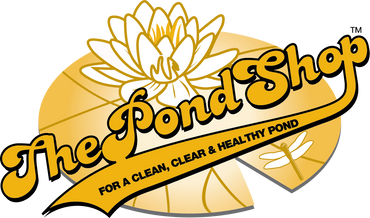Fanwort

Fanwort also known as Colomba is a submerged, perennial, hardy aquatic plant native to the Southern United States. However, Fanwort is now found in most North-East States. Fanwort can tolerate a wide rage of temperatures and pH but prefers slow-moving waters, including lakes and ponds. Fanwort delicate green underwater leaves are fan-like and average 2-inches across. The leaves are arranged in opposite pairs on the stem. Small oval floating leaves, ¼” long grow in the surface. Small white or cream ½” wide flowers developed among the floating leaves. Fanwort is a highly competitive plant that is capable of rapid growth and spread creating dense large mats of vegetation. Sediment levels increase with increasing fanwort abundance, when the dense mats decay the available oxygen in the water may be depleted causing a fish kill. Fanwort can displace native species, reduce biodiversity, and impede fishing, swimming and boating.
Prevention
Fanwort reproduces by both vegetative methods and seed formation. Its stems are very fragile and fragment easily and most pieces can re-sprout and grow into new plants. Seeds are also formed, and fanwort can re-grow from seeds remaining in lake or pond sediment. In the Spring new growth emerges, and plants grow rapidly, as the season progresses roots and stems are easily broken and dispersed to new areas by water currents, waterfowl, and human activities. When using water facilities such as ponds, lakes, rivers; make sure all clothing, boats, trailers, and any related equipment are free of plant material prior to leaving. Clean and flush watercraft to rid them of any plant contaminants. Nutrient availability in the sediment will feed its growth.
Biological Control
Beneficial bacterial products and enzymes such as PZ900 feed on nutrients in the water making them unavailable for plant growth. Reducing nutrients can help prevent invasion.
Physical/Mechanical Control
In smaller invasion areas physical control of fanwort is usually accomplished by raking the plants off the pond and then disposing of plant material away from the pond so that the wind or runoff cannot transport it back into the water column. Physical removal along with chemical control and a reduction of nutrients entering the pond will maximize success.
Dyes and colorants reduce aquatic plant growth by limiting sunlight penetration and reducing photosynthesis. Pond dyes have been helpful in preventing fanwort proliferation.
Aeration has also been used as a mechanical approach to hinder fanwort proliferation. Fanwort prefers to grow in slow-moving water. Aerators will create current patterns in the water body disrupting their growth. Furthermore, the added oxygen will accelerate the decomposition process of nutrients that feed pondweeds and algae during the summer months.
Chemical Control
When used carefully according to the label instruction, aquatic herbicides can be safe and effective management tools. The products that have been successful in treating fanwort are Sonar AS, Sonar RTU, Propeller, Reward, and Weedtrine D. A nonionic surfactant Cygnet Plus should be mixed in solution with herbicides when plants are treated.
Sonar A.S. is long-acting systemic herbicide ideal for water bodies with minimal flow. Simply mix Sonar A.S. with water and spray throughout the surface of the water or pour in different spots around the pond. Sonar A.S. does not have water use restrictions.
Sonar RTU is a long acting, systemic, easy to use herbicide. Sonar RTU does not require mixing, simply open the bottle and treat from the shoreline.
Propeller is a broad spectrum, fast acting contact algaecide/herbicide. It comes in a water dispersible granule that mixes with water to be sprayed or pour. Propeller should be applied to actively growing plants or algal blooms.
Reward is a registered diquat label for aquatic use. This contact algaecide and herbicide quickly and effectively kills filamentous algae and all plant cells.
Weedtrine D is a contact, non-volatile herbicide for use in controlling submersed and floating aquatics weeds. Weedtrine-D has rapid absorption and herbicide action.
Cygnet Plus is a nonionic wetting agent, sticker, activator, and penetrant all in one. Cygnet Plus increases the effectiveness of herbicides uptake into the plant tissue.
